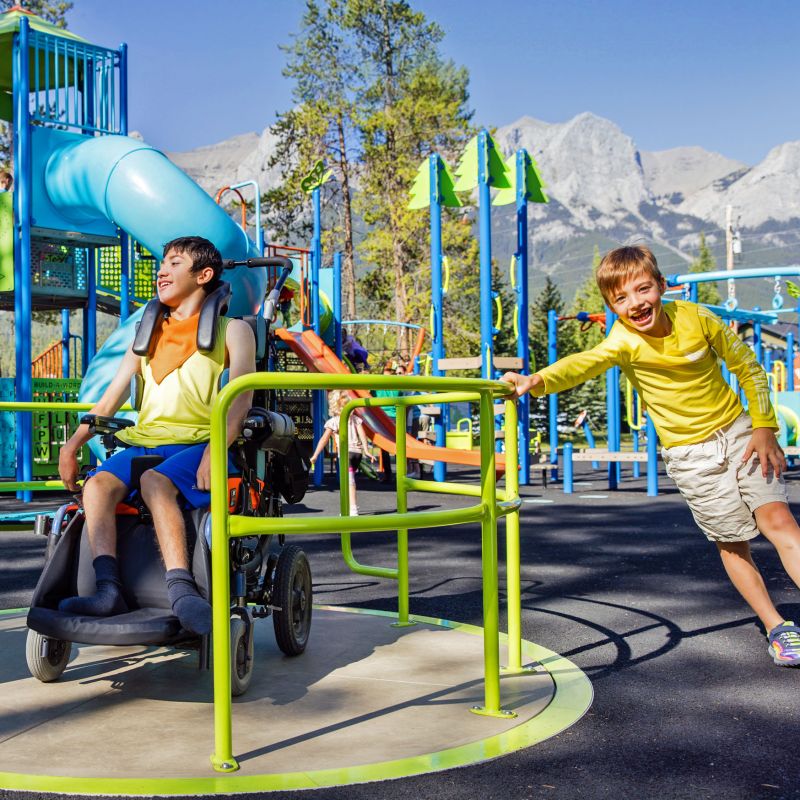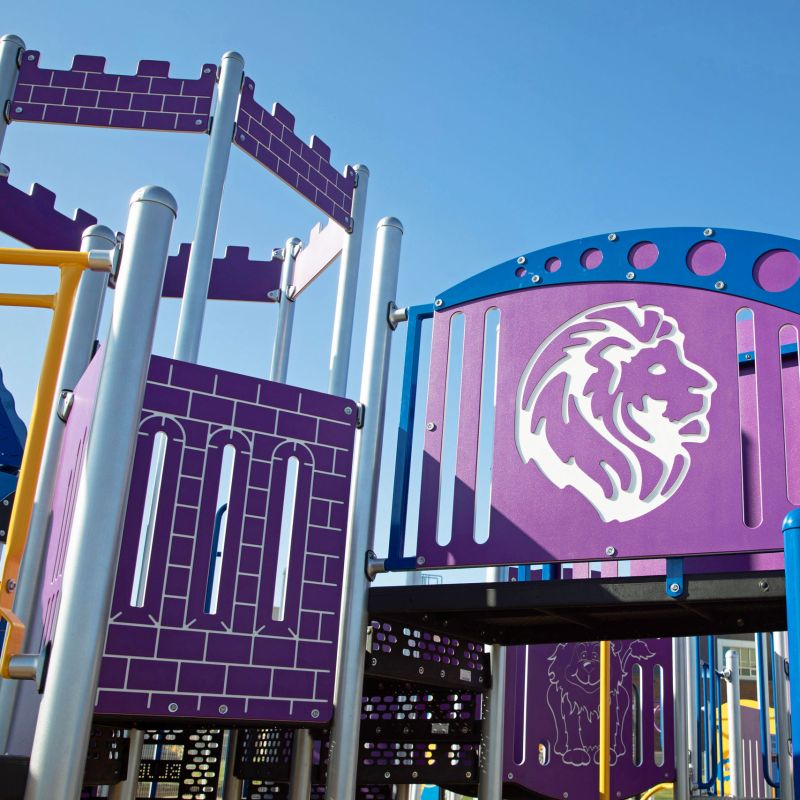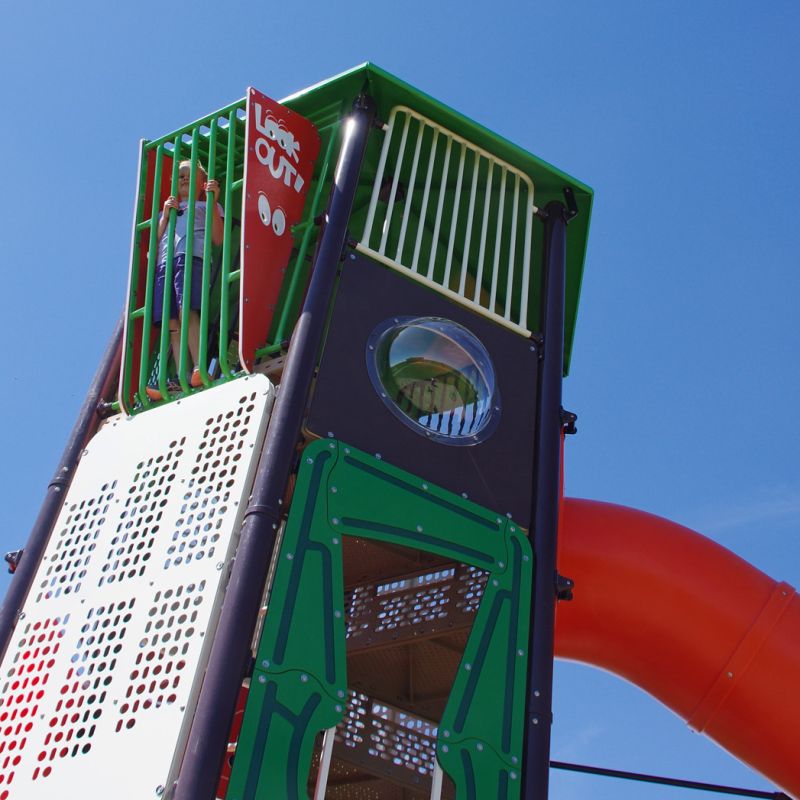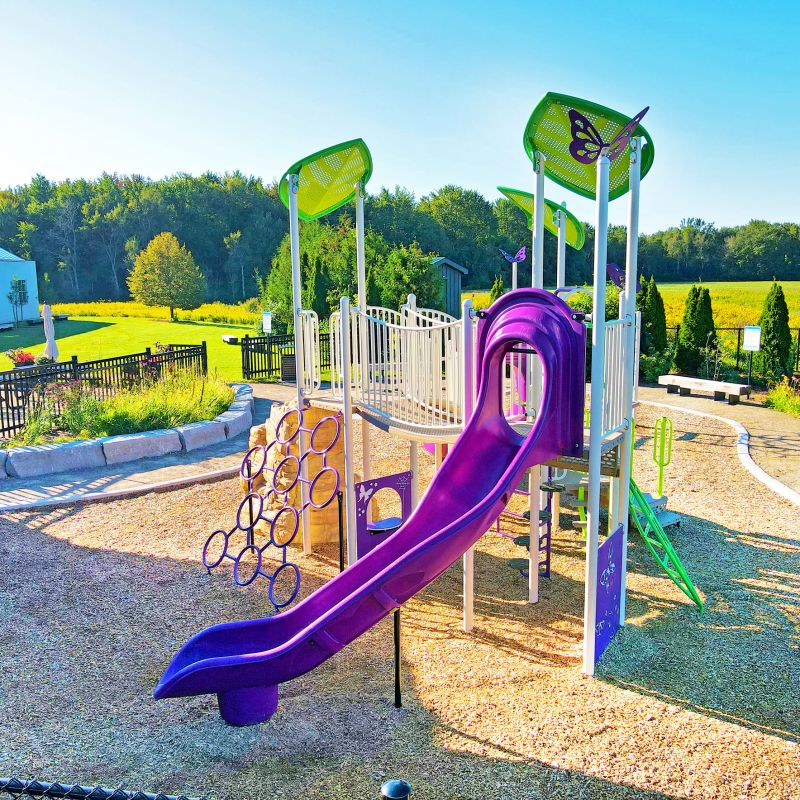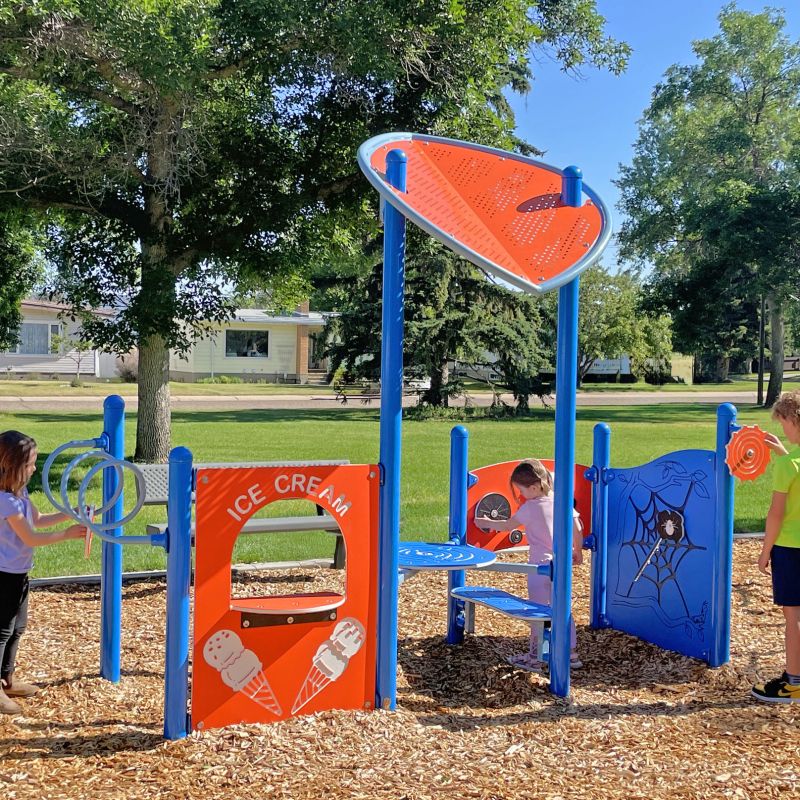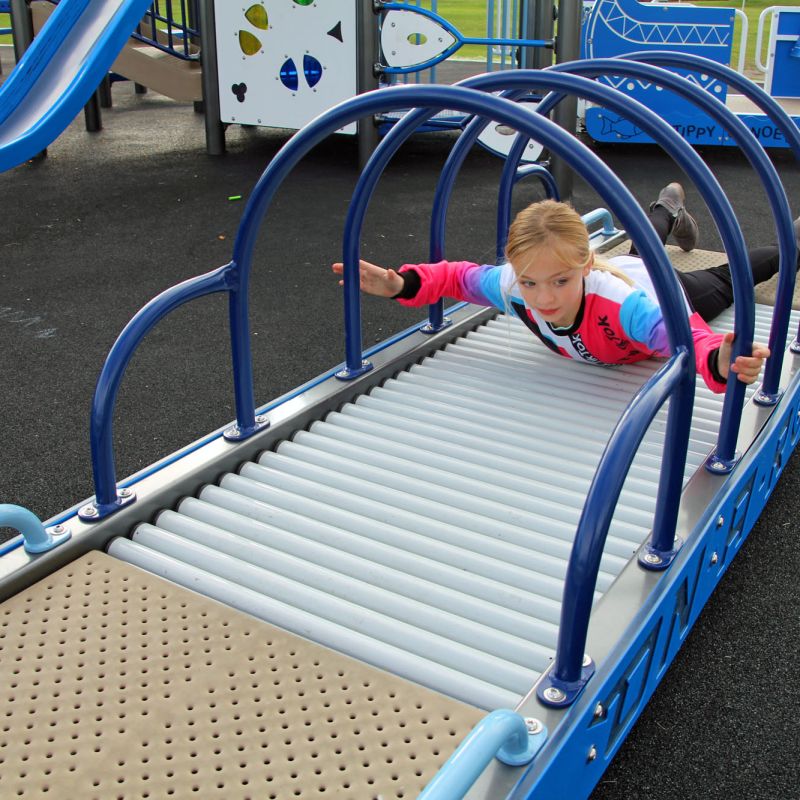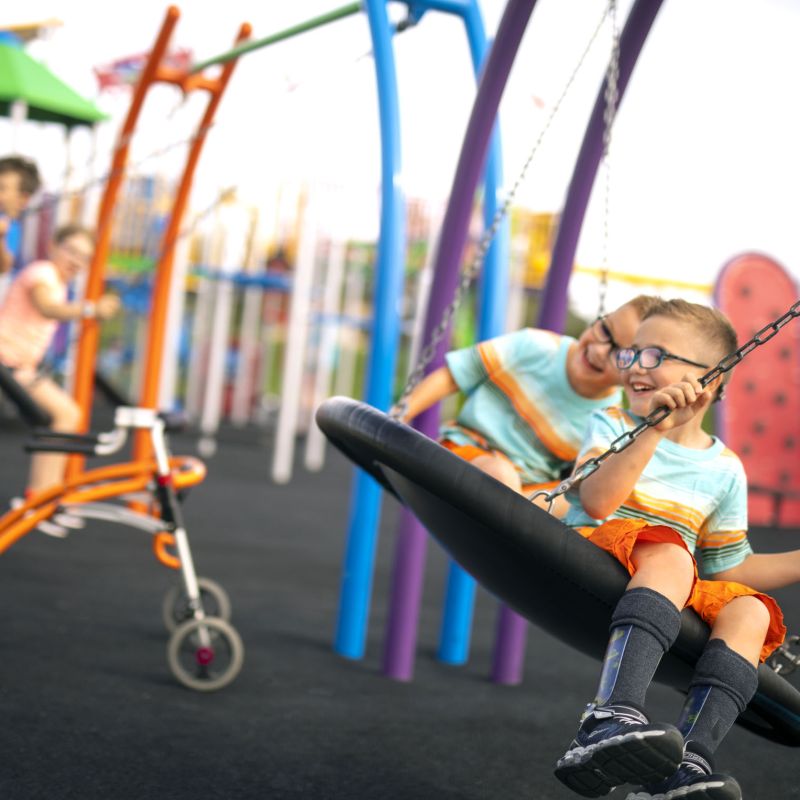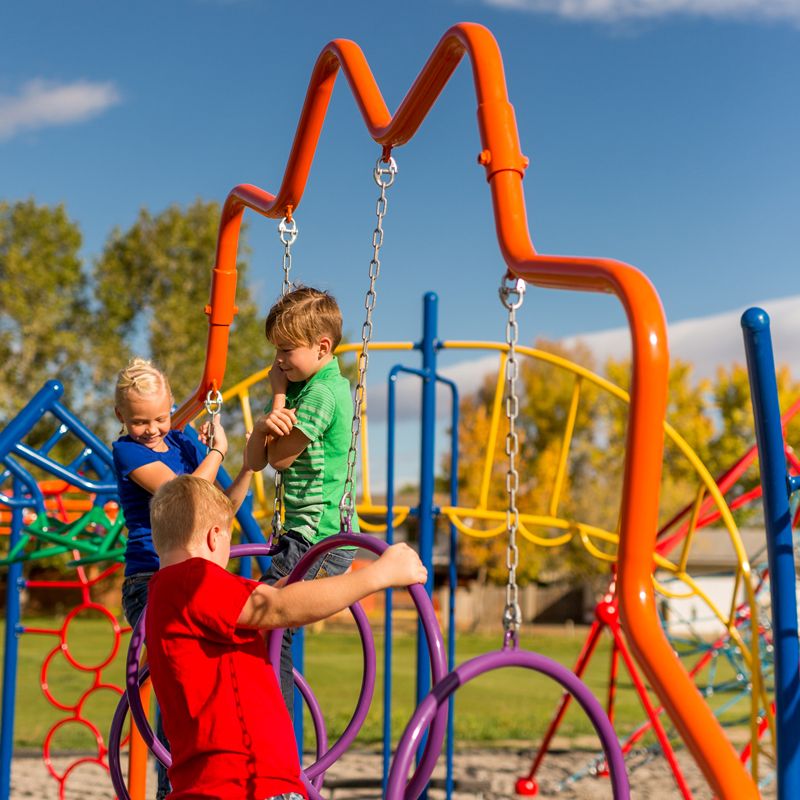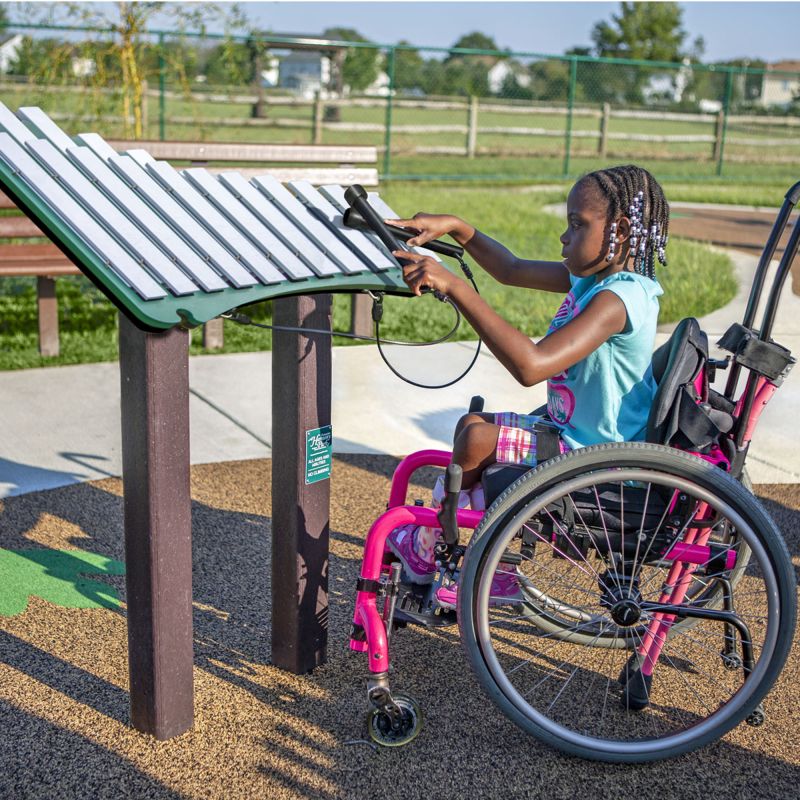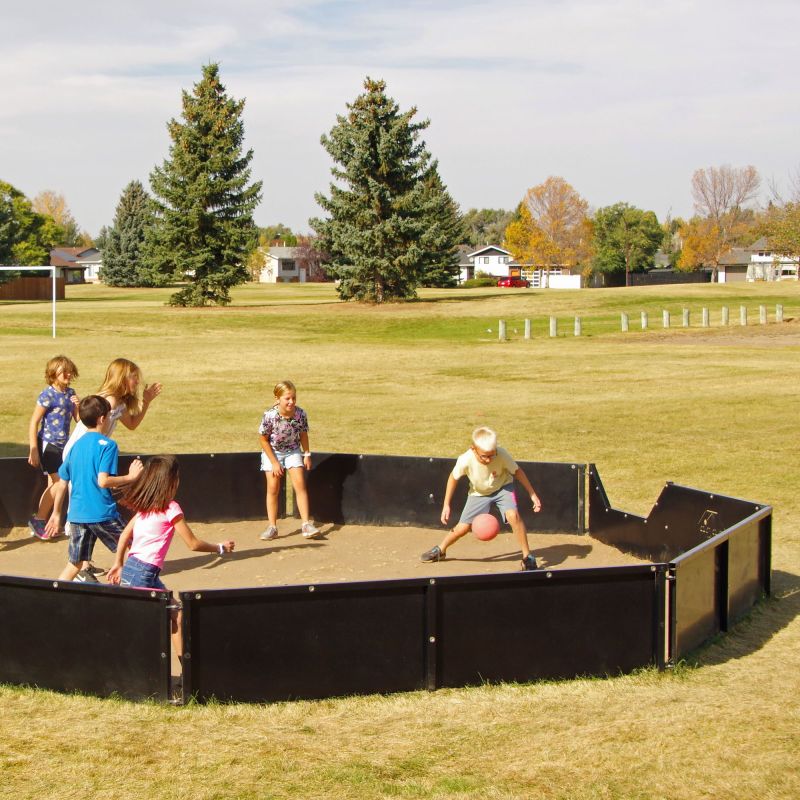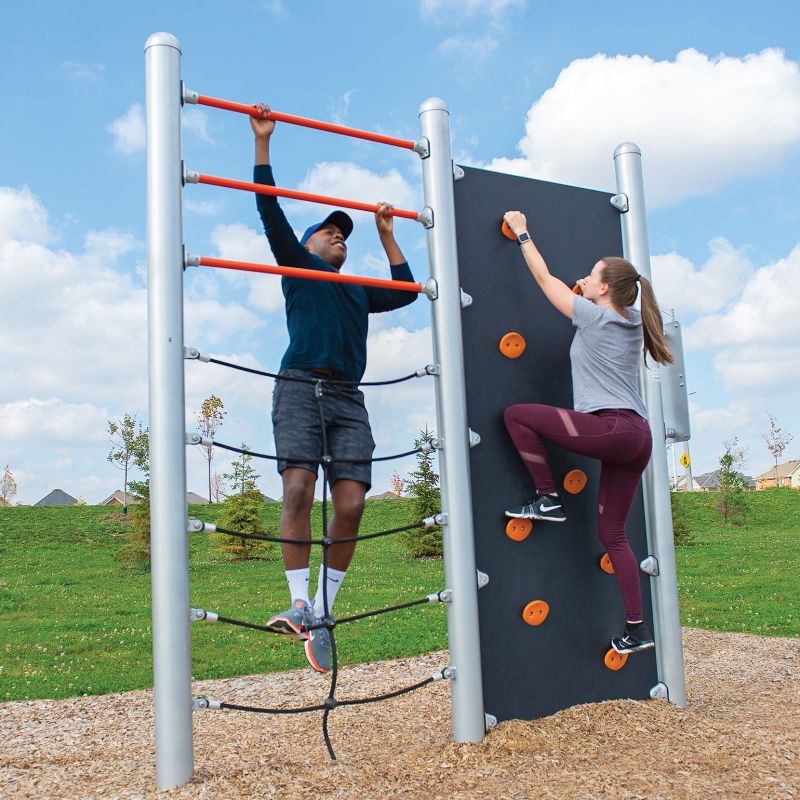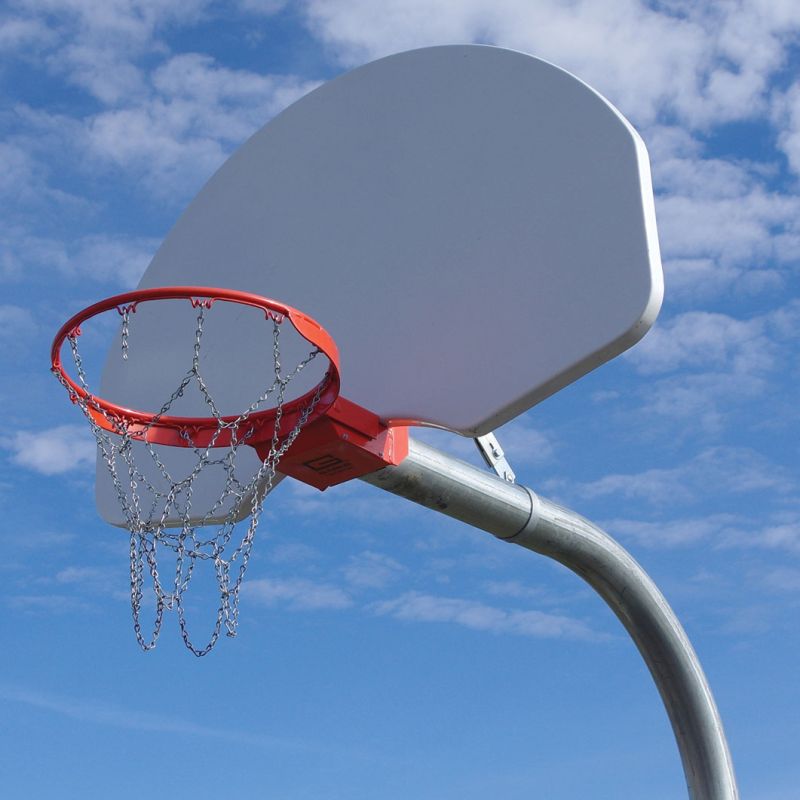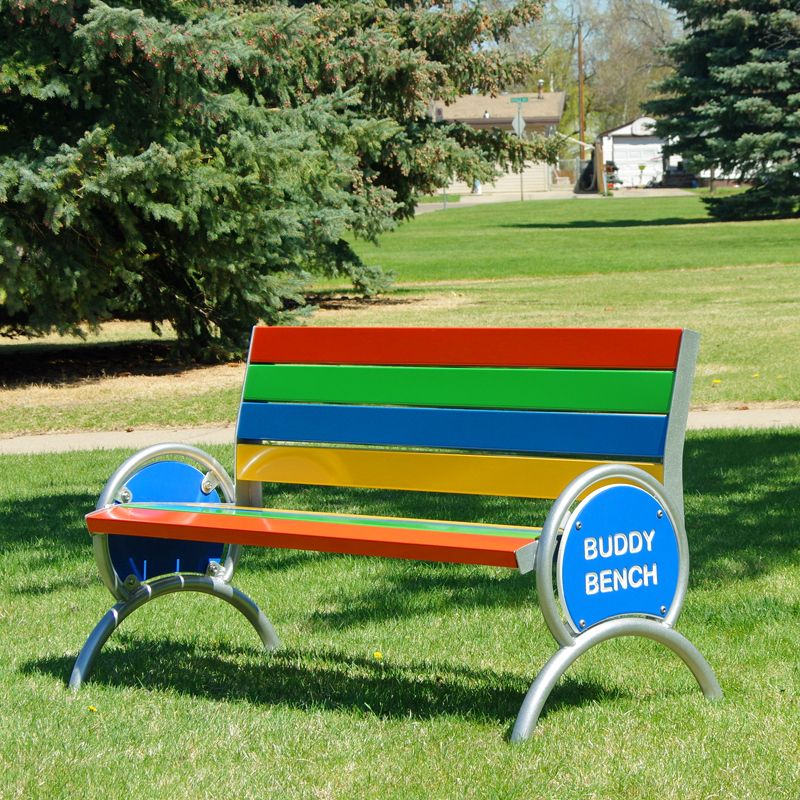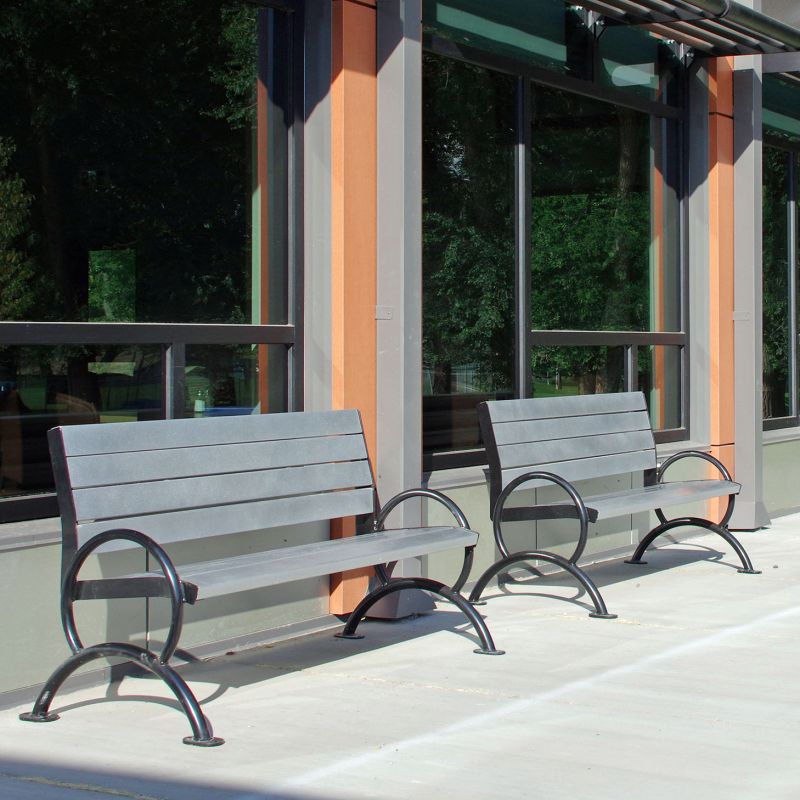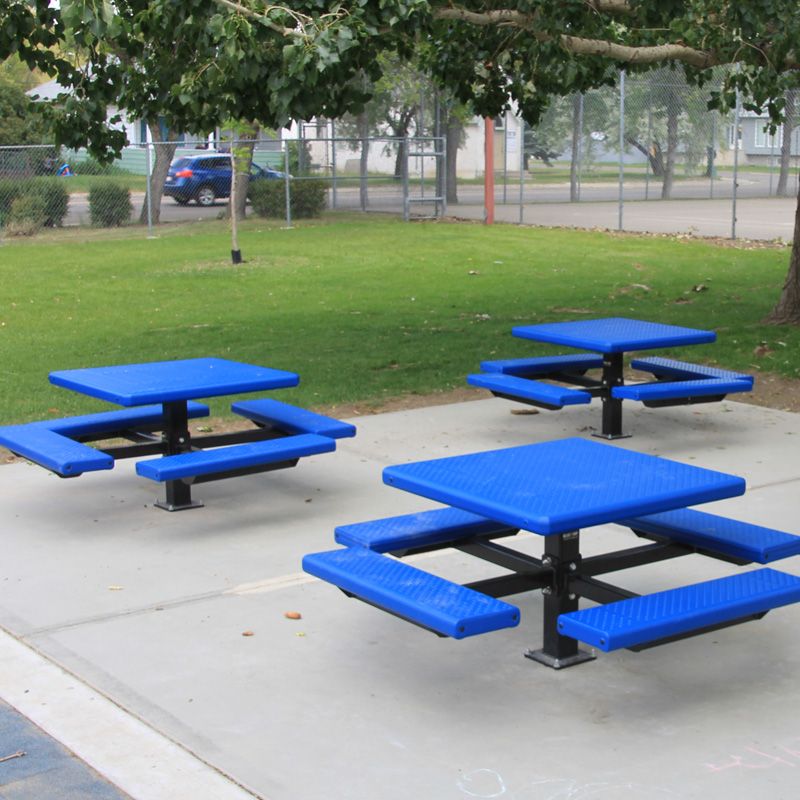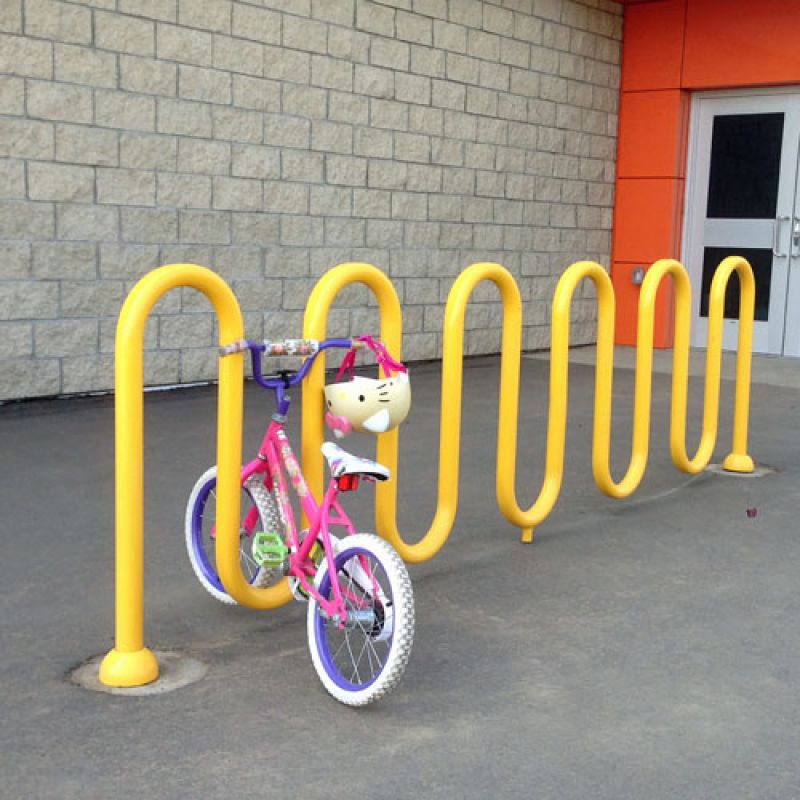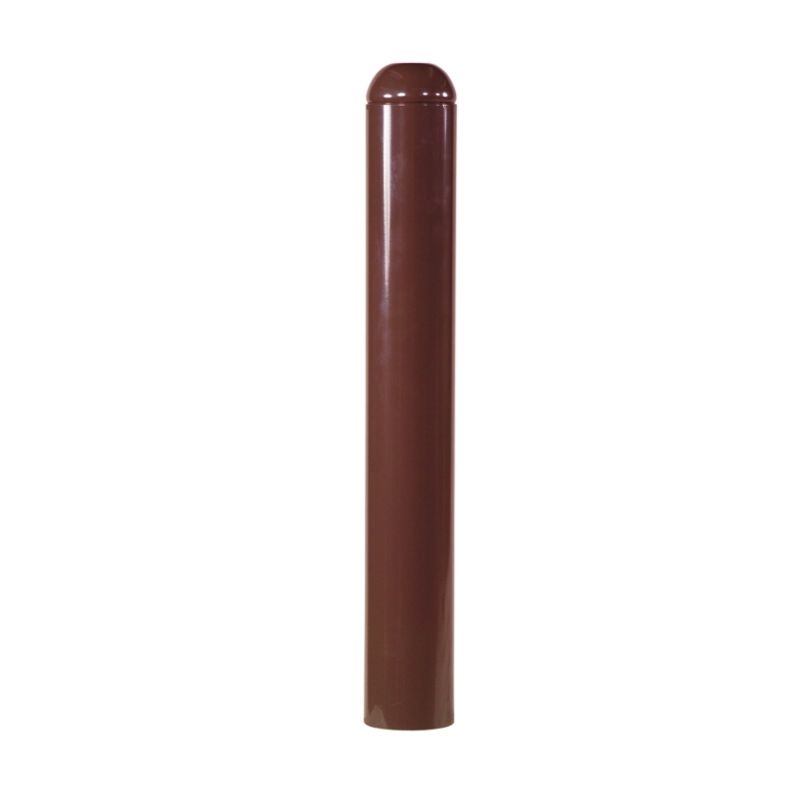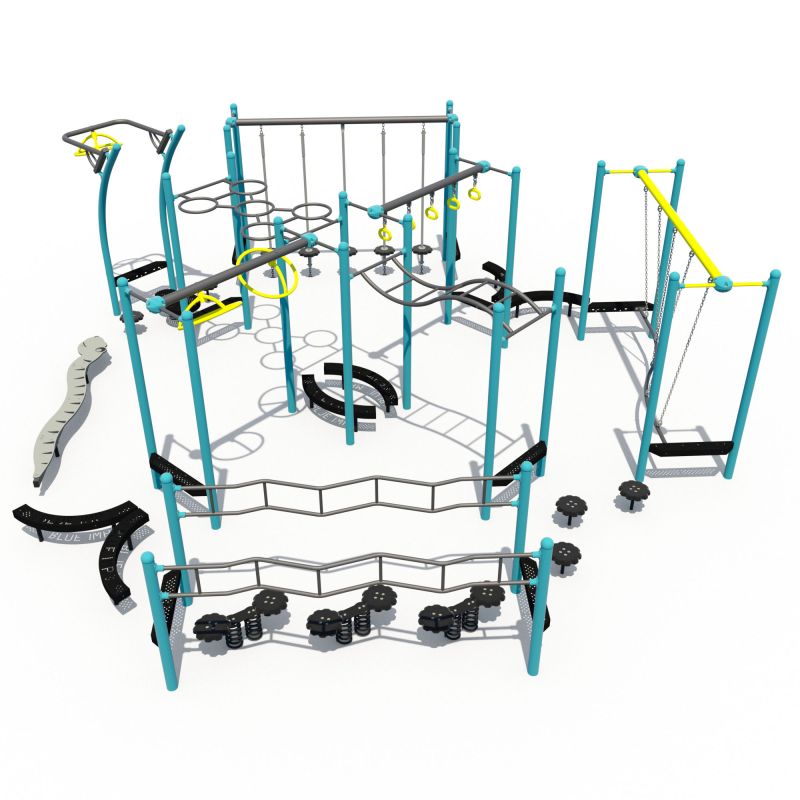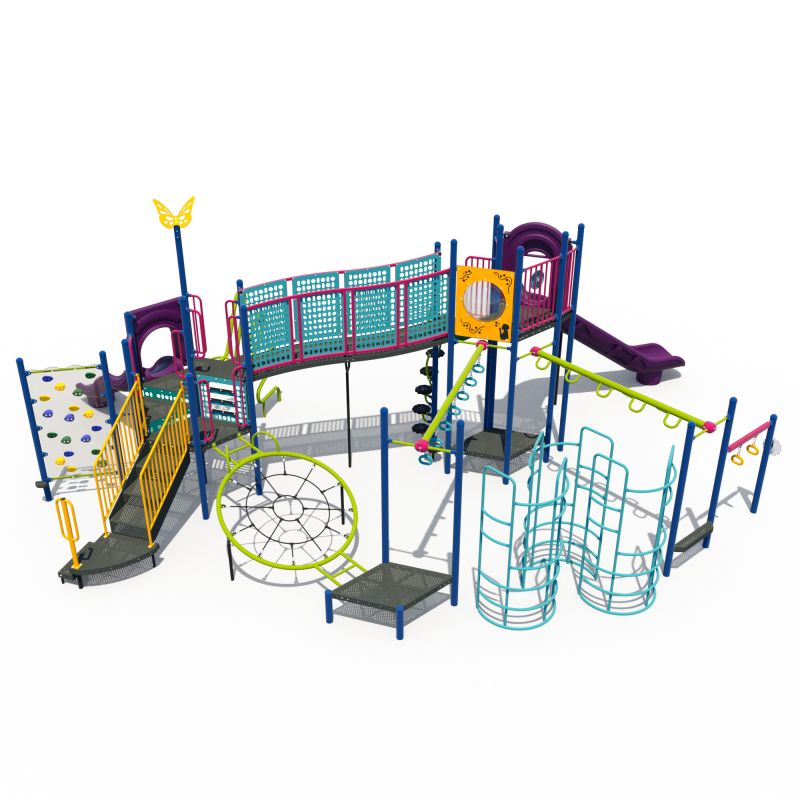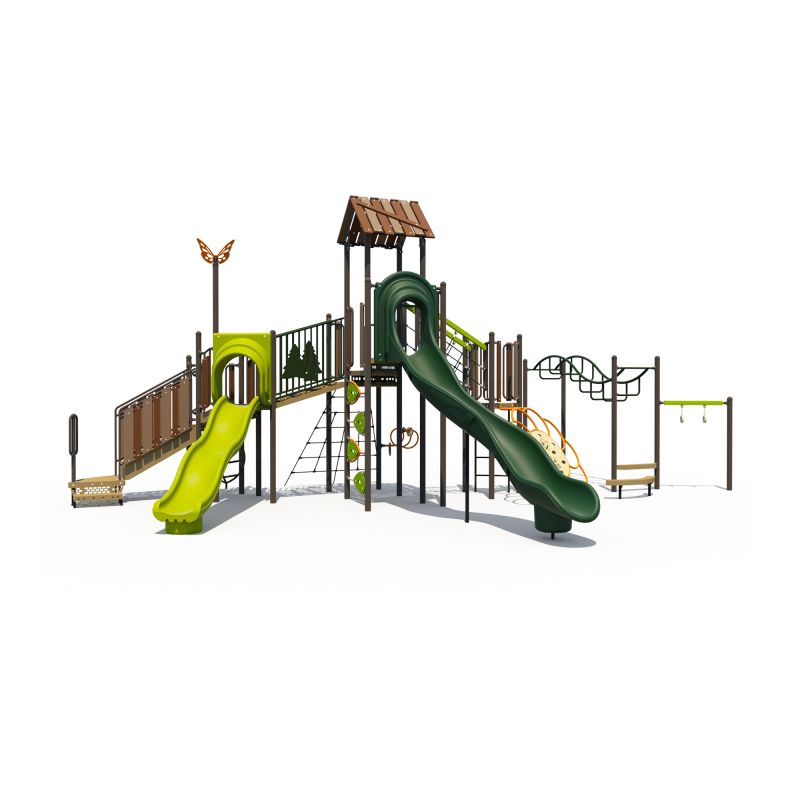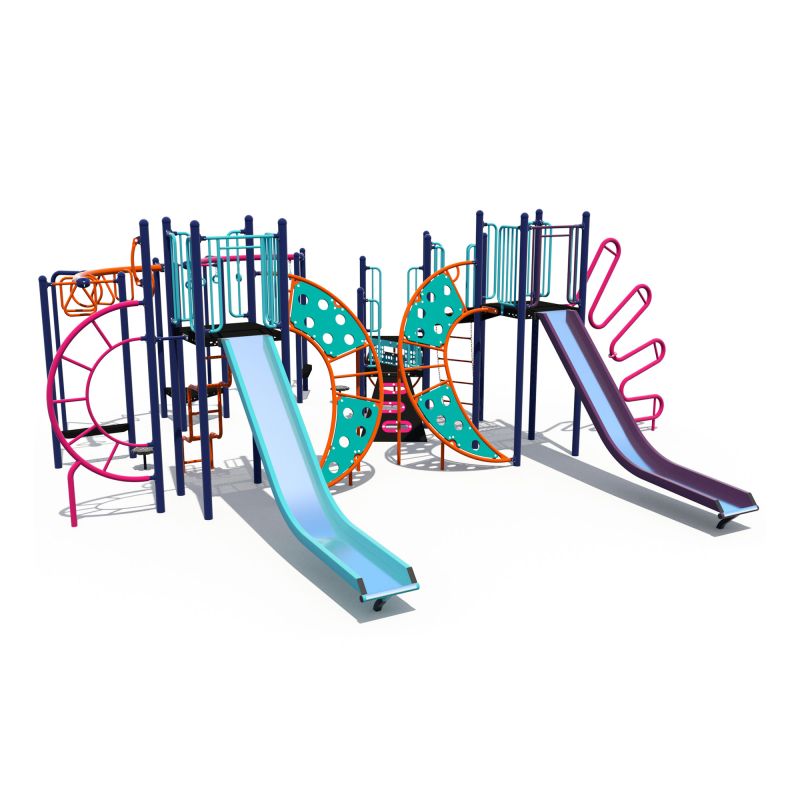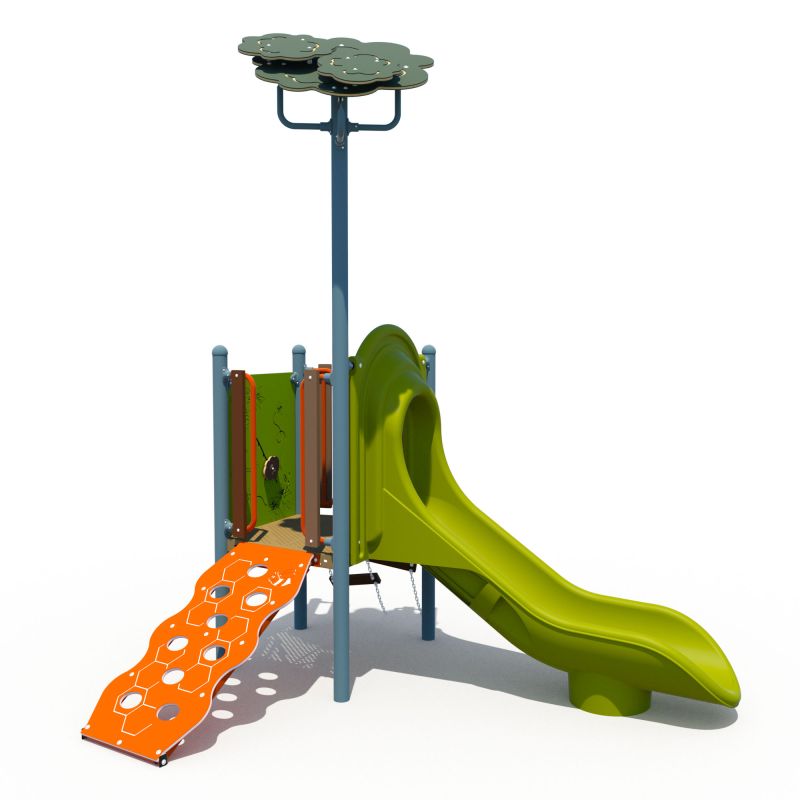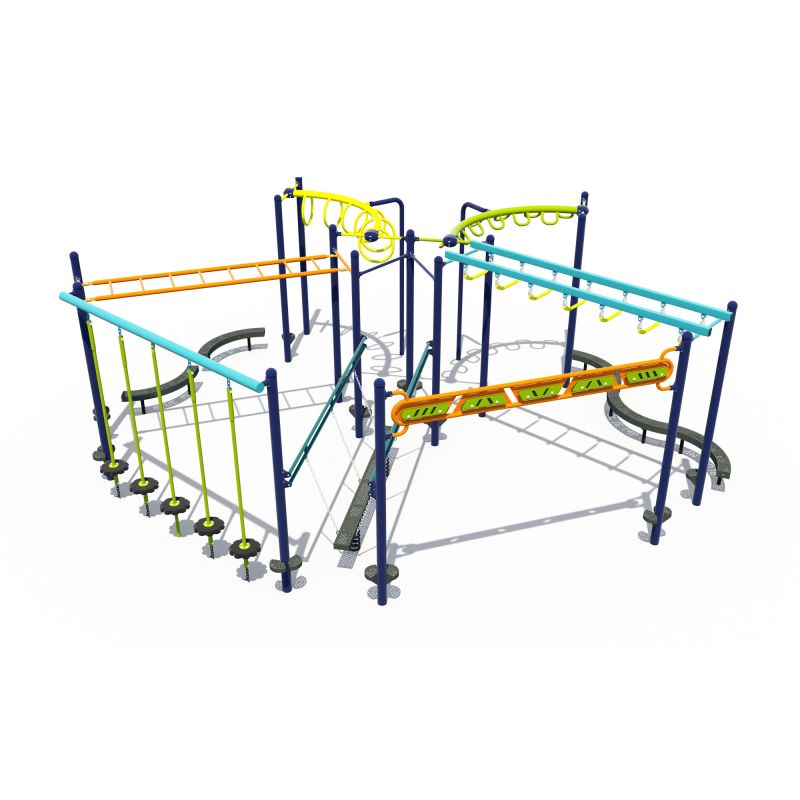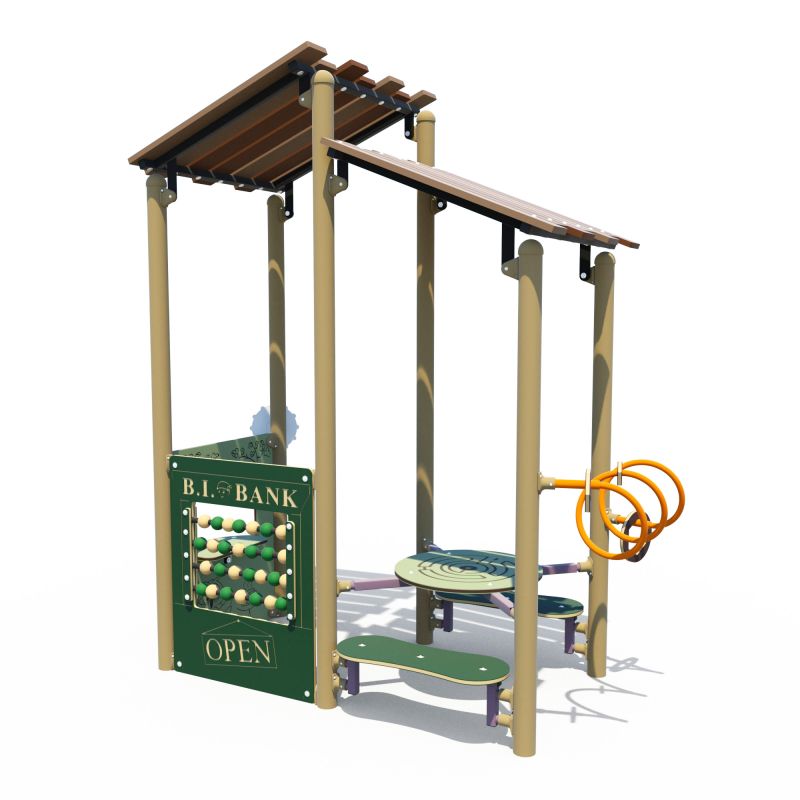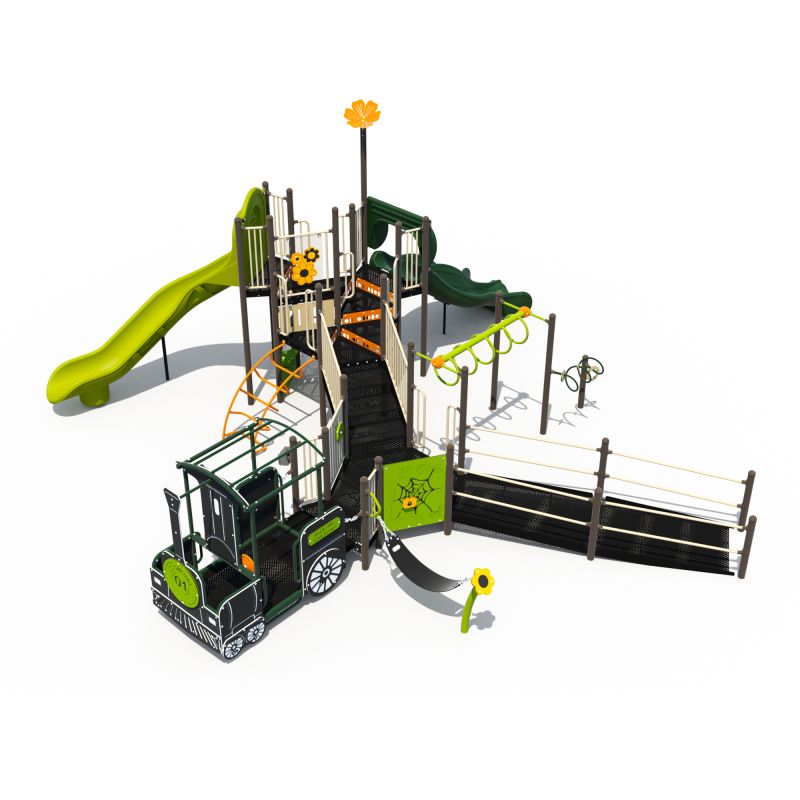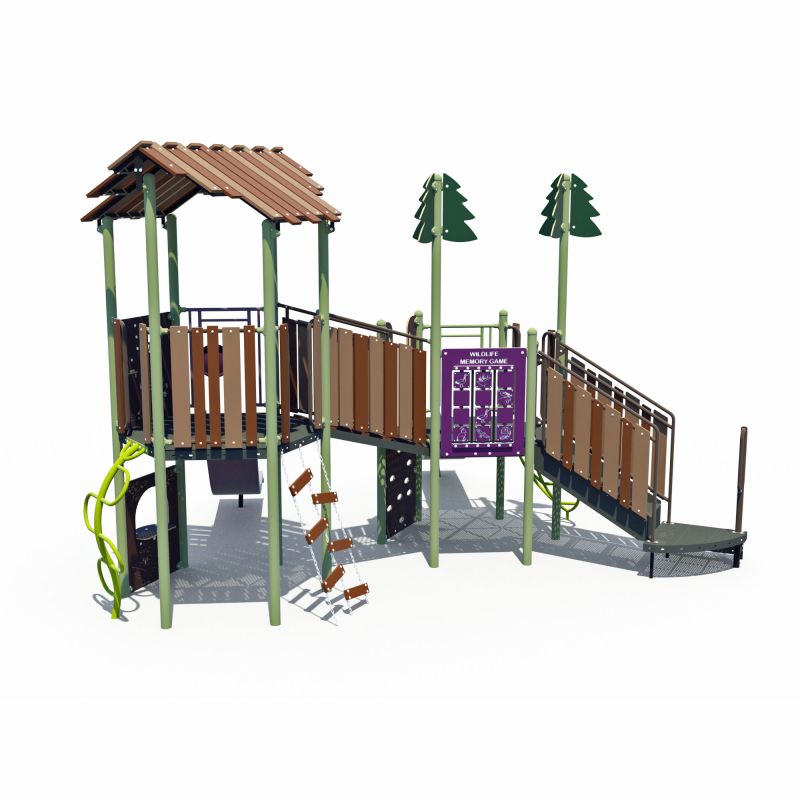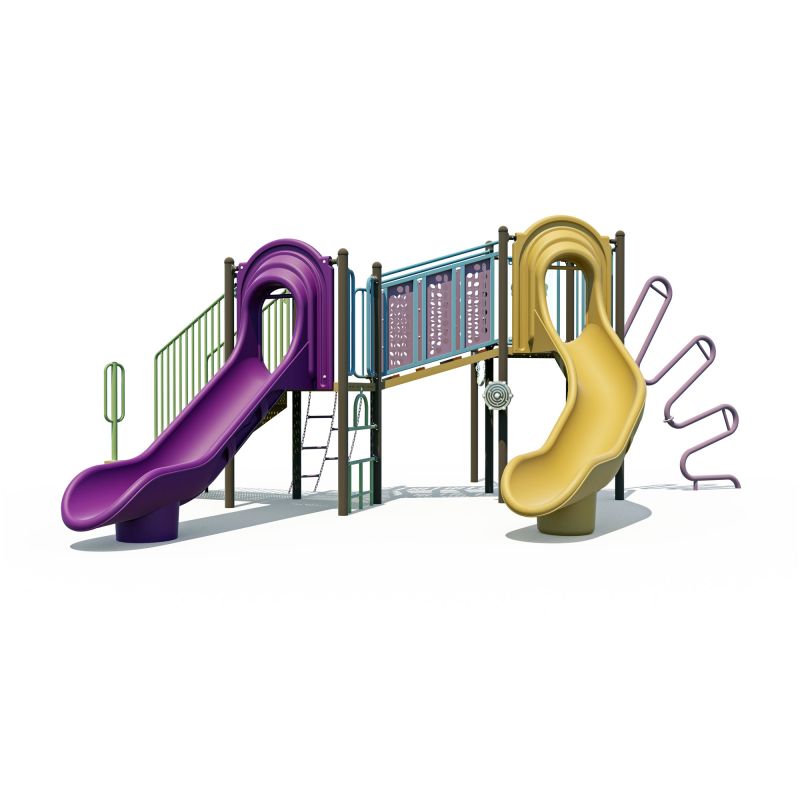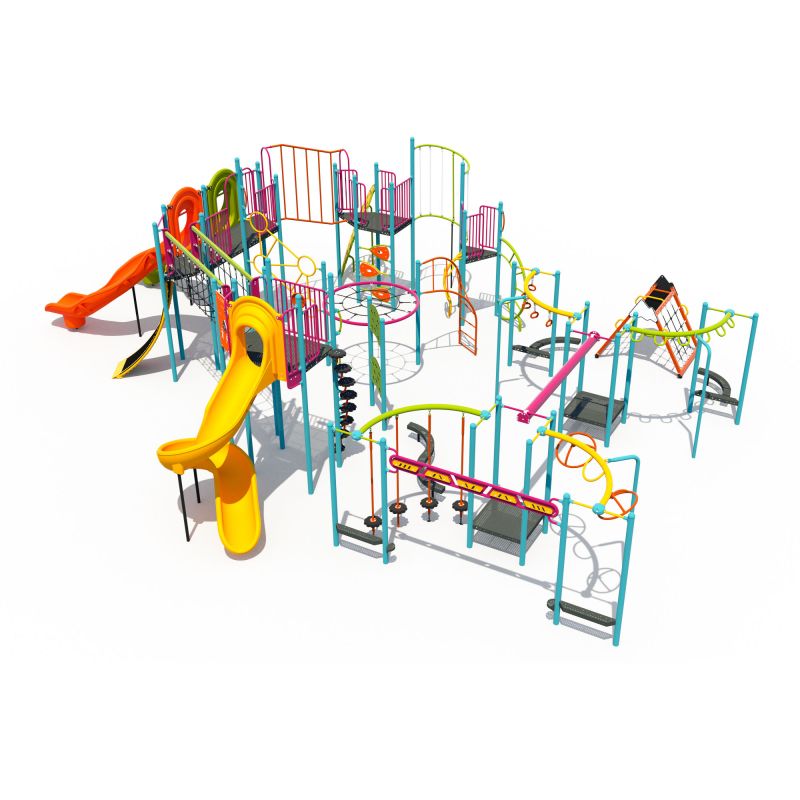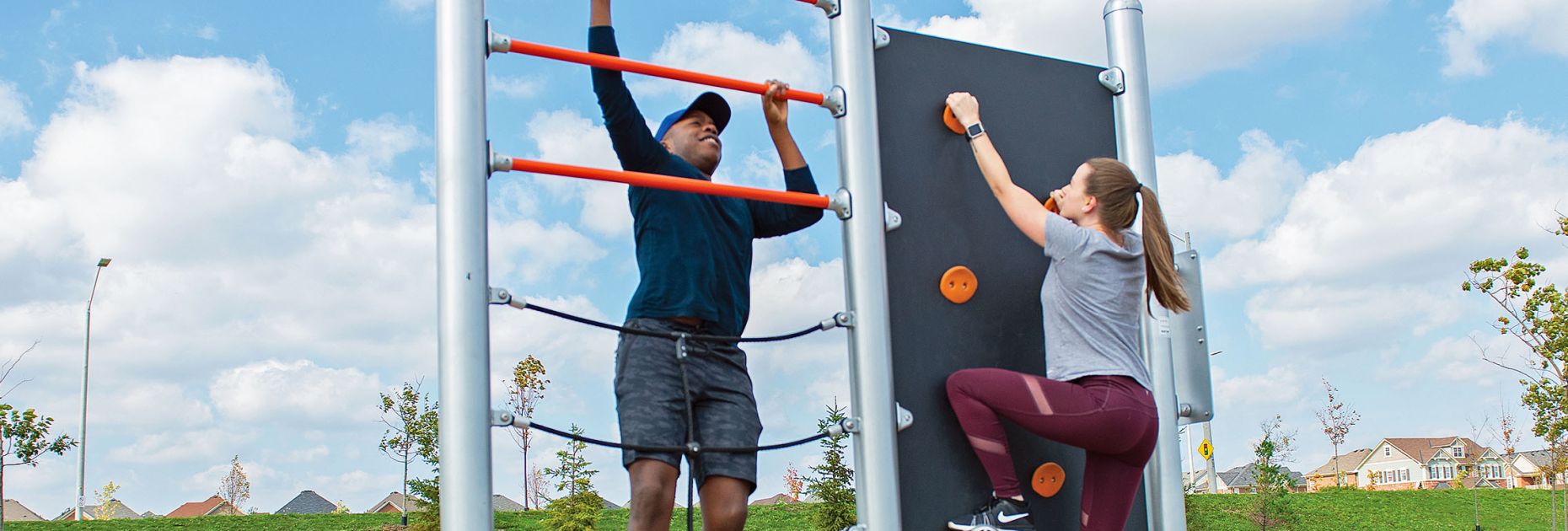Think back to the playgrounds of your childhood. An outdoor play structure is much more than a collection of slides and swings. It’s the heart of a community, a place where children learn, grow, and explore together. Here in Canada, choosing the right one means finding equipment that can stand up to our four-season climate, meets rigorous safety standards, and truly welcomes every child.
The Heart of Community Play
A well-designed playground structure quickly becomes the centrepiece of a park or schoolyard. It’s where friendships are made, physical skills are developed, and memories are created. For the people tasked with making these projects happen—from municipal procurement teams to dedicated parent councils—it’s a careful balance of budget, safety, and creating something that will be valued for years to come.
Putting resources into quality play equipment creates a positive ripple effect. It supports community well-being, gets families active, and gives children a safe space to follow their natural instinct to learn through play. That’s why getting this decision right is so important.
Your Guide to Creating Lasting Play Value
We’ve created this guide to give decision-makers clear, practical advice. We’ll cover what you need to know to choose the right structure, with a focus on our unique climate and national standards.
Here’s what we’ll cover:
- Built to Last: We’ll look at how to select materials and designs tough enough for Canadian weather, ensuring you make a smart, long-term investment.
- Compliance by Design: You’ll get a straightforward explanation of CAN/CSA Z614 standards and what they mean for building a responsible play area.
- A Place for Everyone: We’ll explore how to design spaces that support children of all abilities—physically, socially, and sensorially.
As Canada’s longest-standing playground manufacturer, our goal is simple: to help you build exceptional play spaces that bring joy to your community for generations.
Your Project Planning Checklist
Bringing a new playground to life is an exciting process. Long before the first installation, the real work begins with a thoughtful plan. A successful project is a collaboration between community leaders with a vision, procurement teams managing practicalities, and landscape architects who can shape the space.
This checklist is your starting point. It’s designed to walk you through the key decisions, ensuring everyone involved is aligned and ready to create a play space that will be valued for years to come.
You’re not just filling an empty lot. You’re building a hub for physical activity, social connection, and imaginative growth. The image below shows how a single structure can support these three pillars of childhood development.
A great playground is a vital tool for raising healthy, happy children. With that in mind, let’s lay the groundwork for your project.
Know Who You’re Building For
Before looking at a catalogue, your first question should be: Who are we building this for? This is the cornerstone of your project. The play styles, physical skills, and safety needs of a two-year-old are very different from those of a ten-year-old.
Let’s break down the main user groups:
- Ages 2–5: This group thrives on ground-level fun. Think shorter slides, sensory panels that engage their curiosity, and easy-to-navigate structures that build their confidence and motor skills.
- Ages 5–12: Older children seek a challenge. They’re looking for taller climbers, complex routes that test their agility, and spaces where they can socialize with friends.
- Inclusive Play: Is your goal to create a space where every child can play side-by-side? This means thinking about wheelchair-accessible components, adaptive swings, and engaging ground-level activities from the beginning.
Map Your Space and Set Your Goals
Every site has unique strengths and limitations that will shape your final design, so a thorough site assessment is essential. Measure the available area—this will dictate the footprint of the structure and the required safety zones around it. Take note of drainage, sun exposure, and any existing trees or features you want to incorporate.
Once you understand the site, you can set clear project goals. These goals will guide every choice you make.
A great playground balances four key elements: play value, inclusivity, capacity, and budget. Defining your priorities for each of these creates a focused vision that keeps the project on track.
For instance, a school’s parent council might prioritize inclusive play value and ensuring the playground can handle many students at recess. A municipal parks manager might be more focused on lifecycle value and ensuring everything meets CAN/CSA Z614 standards.
To help you navigate these early stages, our guide on how to plan your playground is a valuable resource that goes deeper into these first steps.
Outdoor Play Structure Planning Checklist
To help bring different perspectives together, here’s a table outlining what stakeholders should consider at each phase of planning.
| Planning Stage | Key Consideration | Relevance for Municipal Planners | Relevance for School Councils | Relevance for Landscape Architects |
| Vision & Goals | Who is the playground for? What is our main objective (e.g., inclusivity, fitness)? | Focus on community-wide benefit, accessibility, and alignment with public space policies. | Prioritize student needs, fundraising goals, and maximizing play value for recess. | Translate the community’s vision into a cohesive, site-specific design concept. |
| Site Assessment | What are the site’s dimensions, sun exposure, and drainage? Are there existing features? | Ensure the location is safe, accessible, and meets all municipal zoning requirements. | Evaluate proximity to classrooms, supervision sightlines, and integration with school grounds. | Analyze topography, soil, and environmental factors to inform layout and material choice. |
| Budget & Value | What is the total budget? How do we balance initial cost with long-term durability? | Emphasize lifecycle value, minimal maintenance, lead times, and adherence to procurement rules. | Balance fundraising goals with the need for a durable, safe structure that will last. | Specify materials and designs that offer the best long-term value within the project budget. |
| Safety & Standards | Does the design meet or exceed CAN/CSA Z614? What surfacing is required? | Ensure strict compliance with national safety standards and address public liability concerns. | Confirm the design meets all safety guidelines to protect students and staff. | Integrate safety use zones and compliant surfacing seamlessly into the overall design. |
This checklist is a starting point, but it highlights how every role contributes to the final outcome: a safe, fun, and valued community playground.
Think Long-Term: Durability is a Smart Investment
When you’re building for the public in Canada, your equipment has to be tough. An outdoor play structure needs to withstand our four-season climate—from harsh winters to intense summer sun—all while enduring years of enthusiastic play.
While the initial price is always a factor, focusing on lifecycle value is a smarter way to invest community funds.
This is where the choice of materials matters. Using components like galvanized steel for posts and high-quality, durable coatings helps prevent corrosion and wear, which means fewer maintenance needs and a much longer lifespan for the equipment. As Canada’s longest-standing playground manufacturer, we build our equipment in Medicine Hat, Alberta, specifically engineered for these demanding conditions.
Choosing Canadian-made durability isn’t just a purchase; it’s a promise that your play structure will remain a safe, engaging, and valued community asset for decades. That’s a return on investment you cannot get from a cheaper alternative that will need frequent repairs or a full replacement before its time. It’s about building something not just to be used, but to last.
Designing for All Abilities with Inclusive Play

A truly great outdoor play structure is more than a place to climb and slide; it’s the heart of a community where every child feels they belong. Inclusive design isn’t just about adding a ramp. It’s a philosophy of creating a rich, engaging world for children with a spectrum of physical, sensory, social, and imaginative needs. When everyone can play together, the experience is better for all.
At its core, this approach is about creating fair and equal play experiences, making sure no child is left on the sidelines. For school boards and community groups, it’s a demonstration of your commitment to every child. It transforms a simple playground into a dynamic space where empathy, cooperation, and social skills grow naturally.
Supporting Diverse Play Styles
Children experience the world in different ways. A well-designed playground acknowledges this by supporting varied styles of play and offering many different paths to enjoyment and development.
This multi-faceted approach means that every visit to the playground can be a new adventure and a new chance for growth. It’s about creating a space where a child’s unique way of being is supported.
Key Elements of Inclusive Design
- Physical Play: This covers everything from high-energy climbing to the simple joy of gentle motion. Think of structures like our Canmore Lions play system, which has multiple ramps and ground-level equipment so children using mobility devices can get right into the action alongside their friends.
- Sensory Play: Engaging touch, sight, and sound is important for many children. Ground-level sensory panels with different textures, sounds, and colours offer that stimulation in a calm, easy-to-reach setting.
- Social Play: An inclusive playground has natural spots for children to connect. Benches, quiet corners, and group activities like multi-user spinners encourage interaction and cooperative play.
- Imaginative Play: Themed elements, steering wheels, and open-ended spaces are where stories come to life. These features let children create their own games, sparking creativity and problem-solving skills.
True inclusivity means designing for shared experiences. The goal is to create a playground where a child with a mobility challenge and a child who loves to climb can enjoy the same space, interact, and build friendships.
Ready to learn more? Our comprehensive inclusive play guide is packed with practical insights and design principles to help you create a playground that truly welcomes everyone.
Building Connected Communities Through Play
When you invest in inclusive play, you’re investing in the health of your whole community. When children of all abilities learn and play side-by-side, they develop a natural understanding and respect for one another. That empathy, learned early on, extends far beyond the playground, helping to build a more compassionate and connected community.
This is a key consideration for community groups and foundations who care about local impact. By providing equitable access to play, we help build stronger, kinder, and more vibrant communities—one playground at a time. All Blue Imp equipment is designed to meet or exceed CAN/CSA Z614 and ASTM F1487 standards, so every structure starts with a foundation of compliant design.
Built for Canadian Conditions
What does it take for an outdoor play structure to last in Canada? It requires more than a coat of paint. A playground built for our country has to endure a cycle of freeze-thaw, withstand heavy snow loads, and stand up to intense UV rays. It demands a genuine understanding of how materials perform not just on day one, but after a decade of four-season use.
As a family-owned company manufacturing playground equipment in Medicine Hat, Alberta, since 1917, we have spent a century engineering solutions for these challenges. Our “Made in Canada, for Canada” approach is part of every design. It means we select every component for its proven ability to last in our demanding climate, delivering reliable, long-term value. While other playground equipment is manufactured abroad and only assembled and installed locally, Blue Imp products are literally shaped, welded, finished and coated right here in Canada.
Materials Engineered for Performance
The lifespan of a play structure comes down to the quality of its components. Choosing the right materials from the start means lower costs over the years, fewer maintenance needs, and a safer place for children to play—priorities for our municipal and school partners.
Here’s a look at the materials that make a difference:
- Galvanized Steel: We build our structural posts with highly specialized, triple-coated galvanized steel tubing for its exceptional resistance to corrosion. The protective zinc coating acts as a shield against moisture and wear, preserving the structure’s strength.
- Durable Coatings: Our galvanized steel tubing components receive a high-quality, super-durable polyester powder coating. This finish is tougher than regular paint, providing superior resistance to chipping, scratching, and fading from sun exposure.
- High-Quality Plastics: Every slide, panel, and plastic component is made from UV-stabilized materials. This step prevents them from becoming brittle or discoloured after years in the sun, ensuring they remain safe and vibrant.
This focus on material science is our promise that every Blue Imp structure is ready for four seasons of fun, year after year.
The Deep Cove School-Aged Playground, featuring galvanized steel and durable coatings, is built to handle Canadian weather year-round.
A Commitment to Lasting Value
For procurement managers and community leaders, a new playground is a significant investment. The initial price is just the beginning. What really matters is the total cost of ownership over the structure’s life. By building equipment that withstands the Canadian climate, we help communities keep future expenses to a minimum.
A well-built structure does not need constant repairs or premature replacement. This focus on durability means community funds are invested wisely, creating a safe and exciting play space for generations of children.
When you choose equipment designed for our climate, you’re making a lasting investment in your community’s well-being.
Creating a Complete Play Environment
An exceptional playground is more than one big structure. It’s the heart of a complete environment. The best play spaces consider the entire site, creating a cohesive experience that welcomes everyone—not just the children on the main climber, but their parents, grandparents, and the wider community. It’s about shifting focus from a single piece of equipment to a community hub.
Thinking this way also simplifies the process for municipal planners and landscape architects. When you can source the main playground, freestanding elements, fitness gear, and site amenities from a single Canadian supplier, the project becomes more streamlined. You get a unified design, consistent quality, and a smoother process from the first sketch to final installation.
Expanding Play with Freestanding Equipment
While a central structure is a fantastic anchor, freestanding equipment adds layers of movement and variety. These independent pieces help spread children out, increase the playground’s capacity, and introduce different physical challenges.
- Swings: A playground feels incomplete without swings. They provide rhythmic, soothing motion that’s important for sensory development. From traditional belt seats to inclusive adaptive swings, there’s an option for every child.
- Spinners: Spinning is a thrilling activity! Whether it’s an individual spinner or a multi-user model like the All-Around, these pieces are fantastic for helping children develop balance and spatial awareness.
- Climbers and Motion Pieces: Freestanding climbers add exciting agility challenges, while classic motion pieces like spring riders offer imaginative fun for younger children.
Supporting the Whole Community
A great play environment is one where everyone feels comfortable, including parents, grandparents, and caregivers. Adding thoughtful site amenities can transform a play area into a destination where a family can spend an afternoon.
The comfort of caregivers is linked to the duration of a child’s play session. When supervisors have a comfortable place to sit and watch, children are given more time to explore, socialize, and develop their skills.
Consider adding essentials like park benches, shelters for shade, and accessible pathways that make the space welcoming for all. This foresight makes a difference in how much a playground is used and valued.
Creating Multi-Generational Active Spaces
To build a space that serves the entire community, you can integrate outdoor fitness equipment alongside the play area. Our IMPulse line of fitness equipment is designed to let adults and teens get active while supervising younger children, fostering a culture of health across generations. You can arrange discrete stations like the Multi-Fit or a Ring Challenge into circuits for a full-body workout.
When you design a complete environment, you’re building more than a playground—you’re creating a lasting community asset. Request a design for your site and let’s explore how all these elements can come together for you.
We’ve Got Answers: Your Playground Questions
Taking on a new outdoor play structure project is a big step. To help you navigate the process, we’ve put together answers to common questions we hear from community leaders, school planners, and landscape architects across Canada.
Think of this as a conversation starter, designed to give you the clarity you need to bring your community’s playground to life.
What’s Involved in Designing a Custom Play Structure?
It begins with a conversation. Your regional Blue Imp representative will meet with you to walk the site and understand your space, budget, and vision. We want to know who will be playing here and what kinds of activities you want to inspire. This first conversation sets the stage for the project.
Our in-house designers then take those ideas and create initial concepts. You’ll see detailed plan views and 3D renderings that make the playground feel real. We’ll work with you to refine the design, select components, and choose colours that reflect your community. Throughout the process, every decision is measured against CAN/CSA Z614 safety standards. Once you approve the final design, our team manufactures each piece at our Canadian facility.
How Important is the Ground Surface Around the Playground?
It’s critical. Playground surfacing is a key part of the play space’s safety system. Its main purpose is to cushion falls and reduce the risk of serious injury—a concept called impact attenuation. The height of your tallest piece of equipment dictates the type and depth of surfacing you’ll need, as required by the CAN/CSA Z614 standard.
Choosing the right surfacing is a non-negotiable part of creating a compliant playground. The structure and the surface work together as a single safety system.
Some common and effective options include:
- Engineered wood fibre
- Sand or pea gravel
- Unitary surfaces like rubber tiles or poured-in-place rubber
We can guide you through the pros and cons of each, helping you select the best fit for your play structure, budget, and maintenance plan to ensure your site is safe from the ground up.
What Kind of Maintenance Does a Commercial Playground Need?
Regular, proactive maintenance is key to protecting your investment and keeping children safe for years to come. The best approach is to establish a routine inspection schedule—a quick weekly check for obvious issues like loose bolts or worn parts, plus a more detailed inspection a few times a year.
While all Blue Imp equipment is built with low-maintenance materials like powder-coated, triple-coat galvanized steel to handle Canadian weather, nothing replaces a good maintenance plan. It’s the surest way to keep your playground fun, safe, and compliant. We provide a complete set of maintenance guidelines with every structure to help you get started.
Are Your Play Structures Built for Canadian Weather?
Yes, they are. As Canada’s longest-standing playground manufacturer, we have extensive experience building for our climate. Every piece of Blue Imp equipment is designed and manufactured in Medicine Hat, Alberta, with our four distinct seasons in mind. We use materials that withstand harsh weather, like corrosion-resistant triple-coated in-line galvanized steel finished with super-durable polyester powder and robust plastics with UV-stabilizers.
From the freeze of a prairie winter to the sun and humidity of a Maritime summer, our outdoor play structures are made to last. That’s how we deliver lasting play value and reliable fun, from coast to coast to coast.
Ready to build a play space that will become the heart of your community for generations? Talk to your regional Blue Imp representative to get the conversation started.
Ready to take the next step?
Talk to your regional Blue Imp representative to begin the design and budgeting process for your site.


